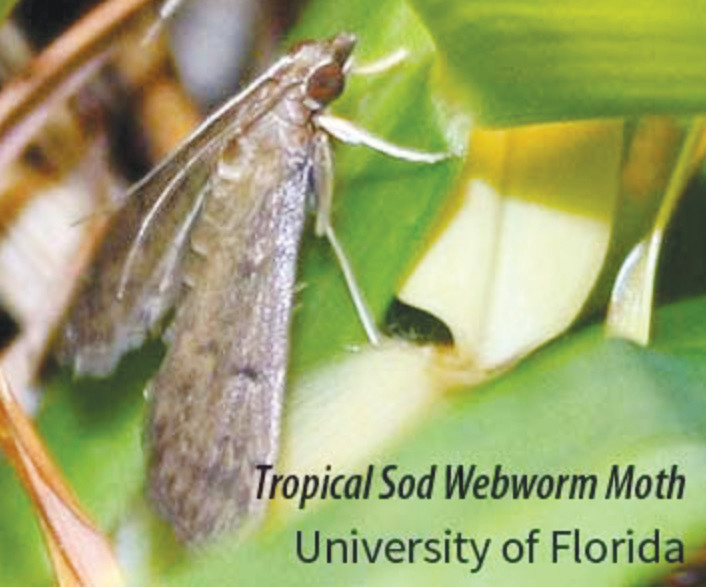Looking for Webworms
GREEN COVE SPRINGS – As the heat of August arrives, so do some unwelcome visitors, the Tropical Sod Webworms.
The tiny moths are thought to move into our area as temperatures begin to increase, …
This item is available in full to subscribers.
Attention subscribers
To continue reading, you will need to either log in to your subscriber account, or purchase a new subscription.
If you are a current print subscriber, you can set up a free website account and connect your subscription to it by clicking here.
If you are a digital subscriber with an active, online-only subscription then you already have an account here. Just reset your password if you've not yet logged in to your account on this new site.
Otherwise, click here to view your options for subscribing.
Please log in to continueDon't have an ID?Print subscribersIf you're a print subscriber, but do not yet have an online account, click here to create one. Non-subscribersClick here to see your options for subscribing. Single day passYou also have the option of purchasing 24 hours of access, for $1.00. Click here to purchase a single day pass. |
Looking for Webworms
GREEN COVE SPRINGS – As the heat of August arrives, so do some unwelcome visitors, the Tropical Sod Webworms.
The tiny moths are thought to move into our area as temperatures begin to increase, to lay their eggs which then lead to damaging caterpillars that can feed on, and destroy sections of every turfgrass used in our county. However, by looking for their presence and responding properly, their impact can be lessened.
The tropical sod webworm is thought to migrate up from south Florida as temperatures increase, being a pest in our region from August until temperatures drop back down. In other parts of our state, they are a year-round concern. When they arrive, their larvae feed on St. Augustine grass, Bahia grass, Centipede grass, and Zoysia grass. The first sign of damage you will likely see is some spots where the turf is an uneven height.
The adults are small, dingy brown, triangular shaped moths that rest in shrubs and plants during the day and are most active at dusk, laying their eggs in clusters on the grass blades. When they hatch after 3-4 days, the larvae go through 6 growth stages, known as instars, increasing in size as they do. The younger instars can be as small as 1.2 millimeters and do most of the damage by “window-paning” the grass while older instars can be up to 11 millimeters long and chew and defoliate the grass.
To scout for the larvae, look all around the leaf blades of the turf and check for damage or caterpillars which feed at night and hide in thatch during the day. Remember that other larvae may be found in your grass such as armyworms and loopers that can cause similar damage and issues.
When ready, the larvae will turn into a pupae down in the thatch of the grass and are brown capsules. Once fully developed, the adult moth will emerge and begin the process again. It usually takes between 21 to 47 days from hatching to emergence of the adult depending on the temperature.
Damage may be difficult to see at first, resulting in a slightly ragged appearance but once it becomes extensive, yellow and green patches may occur.
The best control for tropical sod webworms, like with any turf issue, is to maintain a healthy lawn. Following proper irrigation, fertilization and cultural practices will result in the grass being able to resist or survive minor to moderate insect infestations. Vertical mowing and thatch removal can also help.
If infestations do occur, there are several options for control, including chemical pesticide application and other biological methods including spraying with ento-pathogenic (those that kill insects) bacteria, nematodes, or fungus. For both chemical and biological methods, look for a product that is labeled to treat tropical sod webworms and follow all directions and precautions on the label. There are also several beneficial insects that feed on this species including lady beetles and parasitic wasps.
If you have any questions contact the University of Florida/IFAS Clay County Extension Office at (904)284-6355 or email IF-SVC-Clay-MG@ad.ufl.edu.








